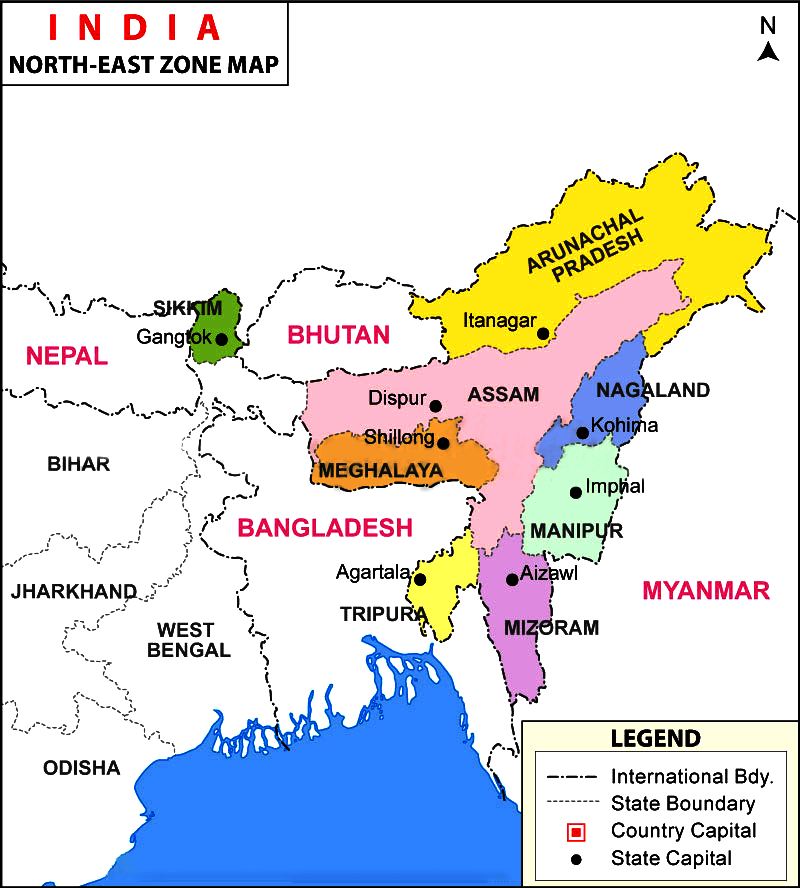Important Facts For Prelims
Statehood Day of Arunachal Pradesh
- 21 Feb 2022
- 4 min read
Why in News?
Recently, the Prime Minister of India extended his wishes to the people of Arunachal Pradesh on its 36th Statehood Day.
- Through the 55th amendment to the Indian Constitution in 1986, Arunachal Pradesh became the 24th state of the Indian Union on 20th February, 1987.
What do we Know about Arunachal Pradesh?
- Historical Background: During the British Colonial Rule, until 1972, the state was named as the North-East Frontier Agency (NEFA).
- On 20th January, 1972, it became a Union Territory and was named Arunachal Pradesh. It was granted statehood by the State of Arunachal Pradesh Act, 1986.
- Geographical location: The state was formed out of Assam in the year 1987.
- In the west, Arunachal Pradesh is bordered by Bhutan and in the north falls the Tibetan region of China.
- In the Southeastern region falls Nagaland and Myanmar and to the southwestern region falls Assam.
- Demography: The capital of Arunachal Pradesh is Itanagar.
- The total literacy rate of the state (as per Census 2011) is 65.38% with male literacy rate being 72.55% and for females, it is 57.70%.
- The Sex Ratio of the states is 938 female per 1000 male (National: 943)
- The state is home to 26 major tribes, there are more than 100 sub-tribes, many of them are still unexplored. About 65% of the population of the state is tribals.
- Occupation: Mostly the population of the state depends on Agriculture, mainly Jhum cultivation (slash and burn cultivation).
- Other cultivation of cash crops is also done like potatoes.
- Horticulture crops such as pineapple, apple, oranges, etc are also done.
- Biodiversity:
- State Animal: Mithun (also known as Gayal)
- State Bird: Hornbill
- It is also home to the Dihang Dibang Biosphere Reserve.
- Protected Areas:
- Namdapha National Park
- Mouling National Park
- Sessa Orchid Sanctuary
- Dibang Wildlife Sanctuary
- Pakke Tiger Reserve
- Tribals of Arunachal: The significant tribal groups include Monpas, Nyishis, Apatanis, Noctes and Sherdukpens.
- Monpas: They are believed to be the only nomadic tribe of northeast, inhabit the West Kameng and Tawang districts, are essentially Buddhists who follow the Mahayana sect.
- Apatanis: They practice pre-Aryan beliefs, which is evident from their worship of trees, rocks and plants amongst other things. They mainly practise bamboo cultivation.
- Noctes: Found in the Tirap district, they follow Theravada Buddhism and Animism.
- Sherdukpens: A small tribal group, they are one of the most progressive tribes that can be found in Arunachal Pradesh practising agriculture, fishing and rearing of livestock. Although they have adopted Buddhism, most of their practices still remain pre-Buddhist and more Animistic.
- Nyishis: They are the most populous tribe of Arunachal Pradesh and are mainly involved in shifting cultivation and produce rice, millet, cucumber, etc.







